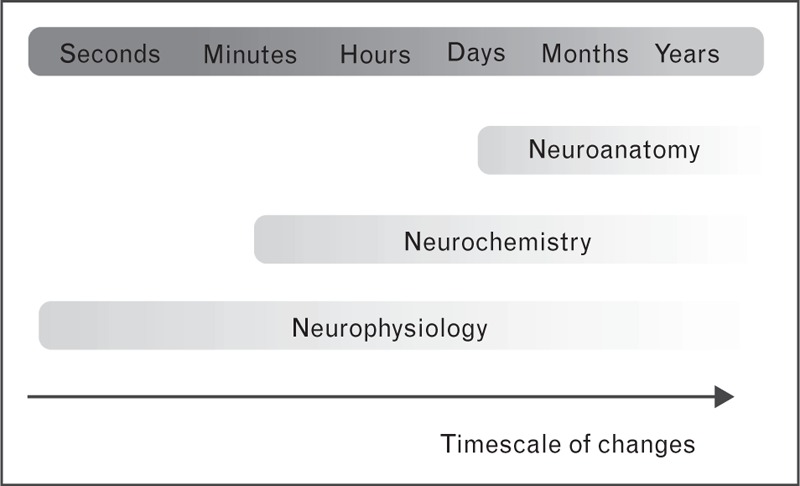FIGURE 2.

Timescales of changes in neuroanatomy, neurochemistry and neurophysiology determining the ability of NTBS to induce long-term potentiation (LTP)-like or long term depression (LTD)-like plasticity. Neuroanatomical changes on the microscopic level (such as myelination) and the macroscopic level (such as cortical thickness or folding pattern) are slow and it can be assumed that neuroanatomical features remain constant for the duration of a brain stimulation protocol. Neurochemical changes can be faster and can be influenced by the time of the day (which is an easily controllable factor), but also faster acting factors such as motivation. Neurochemical features can undergo changes during the administration of NTBS. Neurophysiological changes can occur on the sub-second time scale. For example, attentional changes or changes of the involvement of the stimulated area in the time course of a behavioral task can be very fast. They lend themselves best for the usage in online control settings based on central and peripheral markers of brain state. NTBS, noninvasive transcranial brain stimulation.
